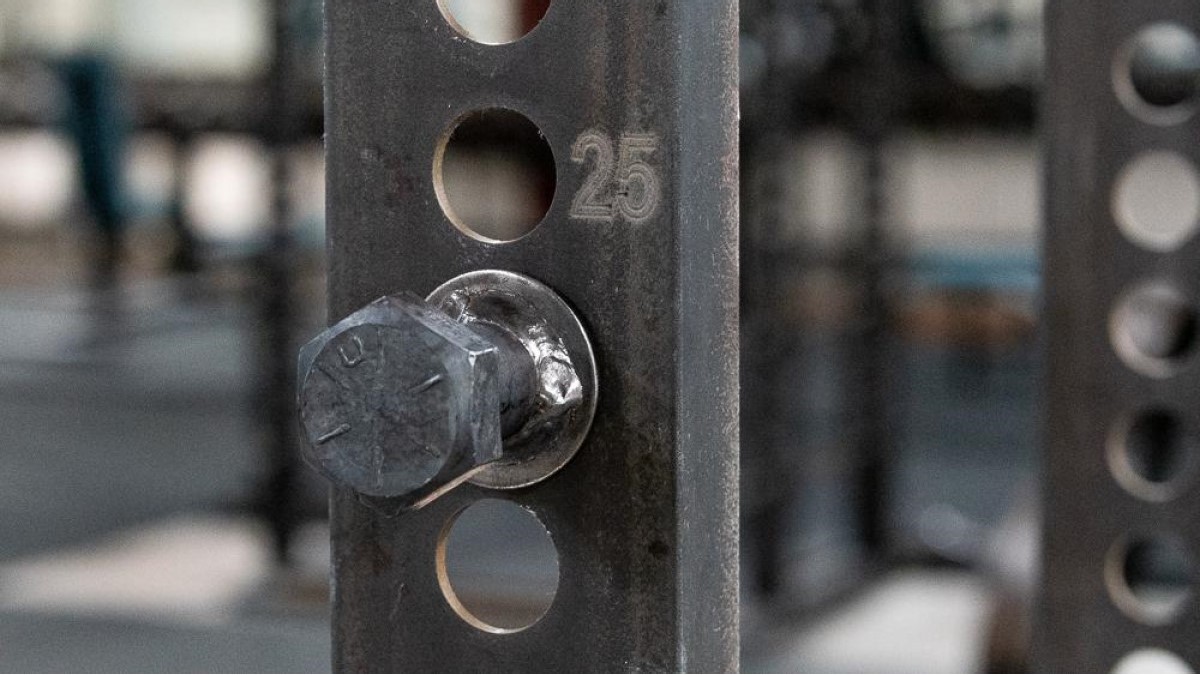Updated in 2023 to explore some more J-hook options and adapters.
Table of Contents
The Dark Ages
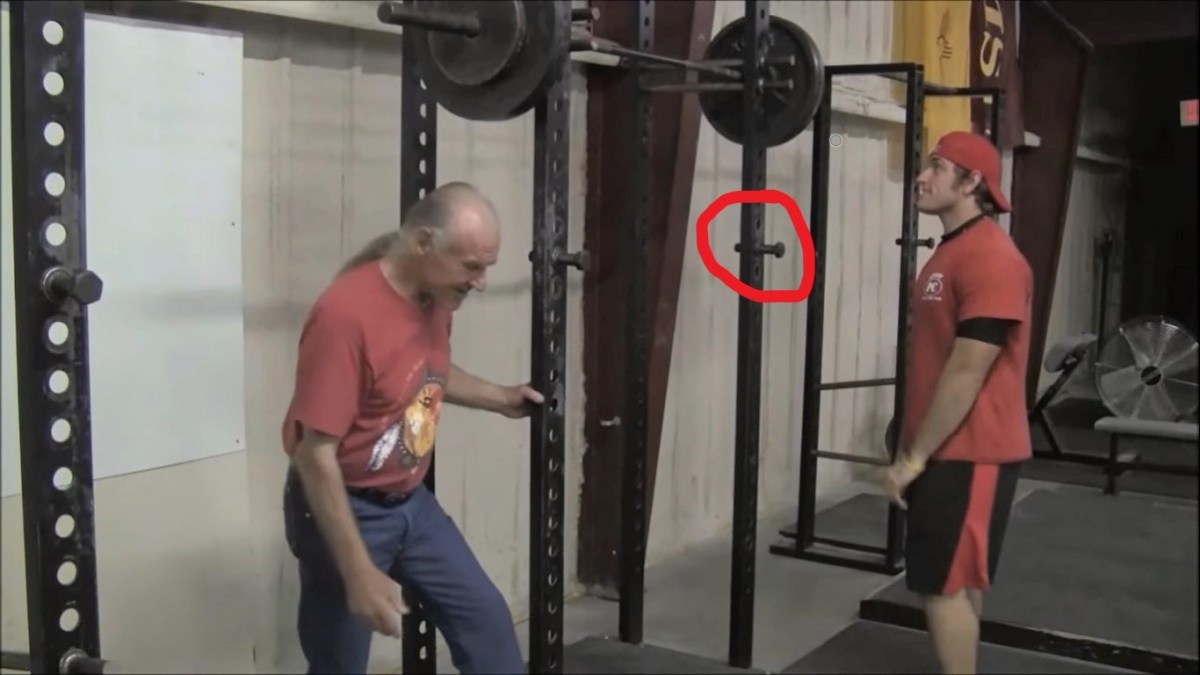
source: https://youtu.be/jMhrxet9Cgc
In early power racks you would see a pair of modified bolts going through the rack and sticking out to hold the bar.
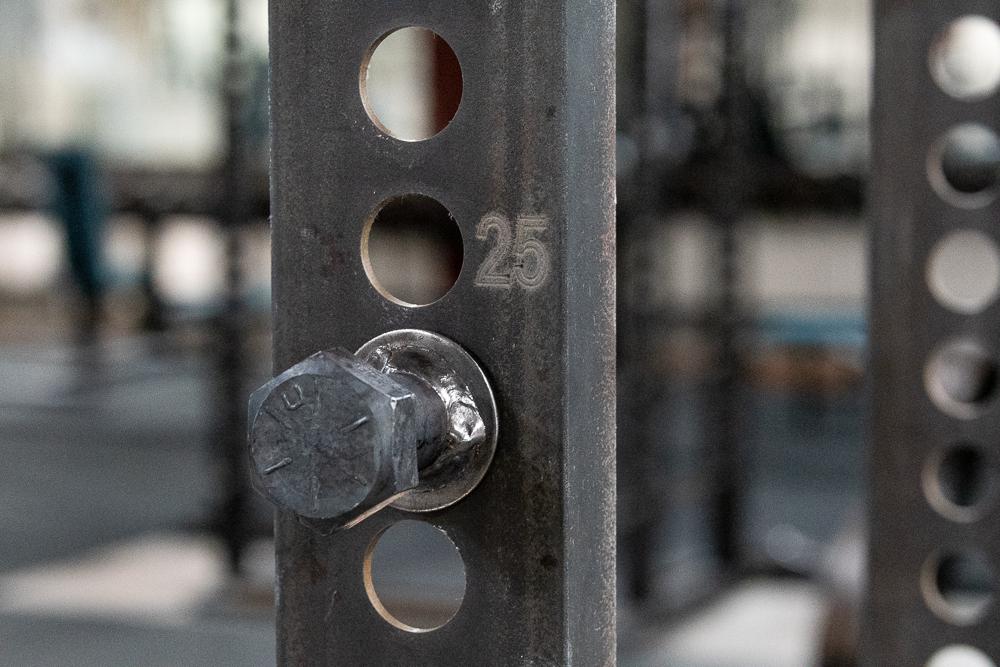
What appears to be those same York bolts are still made as bar holders for the throwback Starting Strength Power Rack above.
The bolt crushes your bar knurling with its very small contact area against the bar. Back in the day, the overwhelming majority of bars in home gyms were cheap and not worth protecting. Now that people are paying more attention to the quality of bars, and the price has come down on them to make them accessible to more people, protecting the bar knurling has become a higher priority.
All-Steel J-Hooks
More engineering was put into the shape of these than the earlier pin designs.
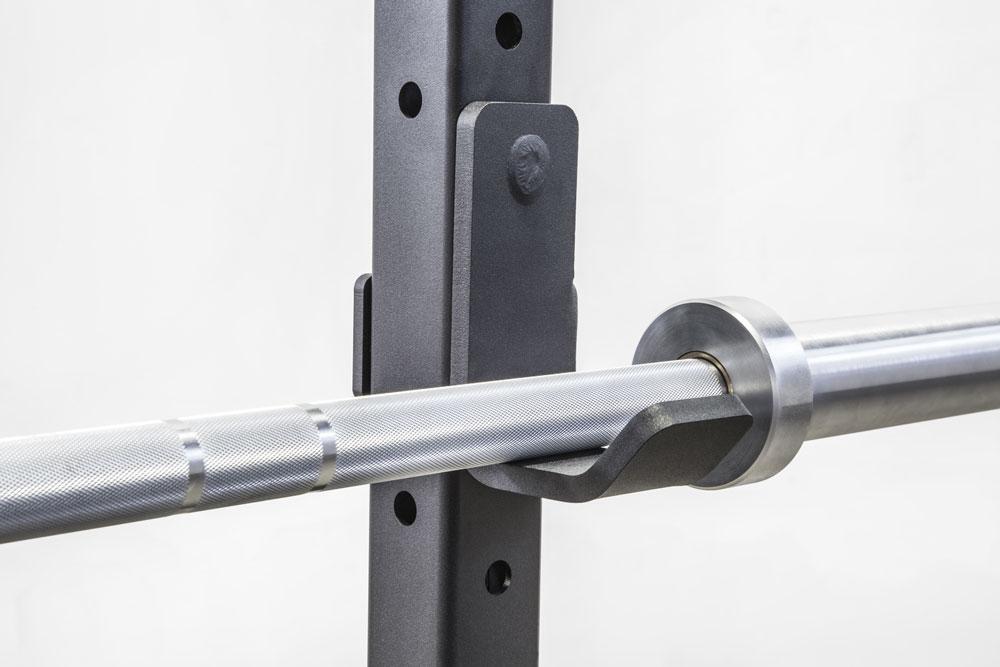
These have become hard to find too, in favor of the ones in the next section. They are made with a C-channel bracket for a flip-down design, like most rack attachments now.
Note that Rogue and some others call them J-cups, while others call them J-hooks. Same exact thing.
A J-hook has a wider contact area against your bar than a round peg. This leads to less severe pounding-in of the knurling, but it also leads to scratches over a larger area, shaving off the knurling. All in all, I don’t think it’s a whole lot better in this respect. Steel-on-steel is never a a good thing for durability.
Notably, they do have a backplate for you to walk the bar in to rack it against, from which the bar can fall straight down into the hook without catching on anything, unlike the bolt design further above where it can catch and freak you out.
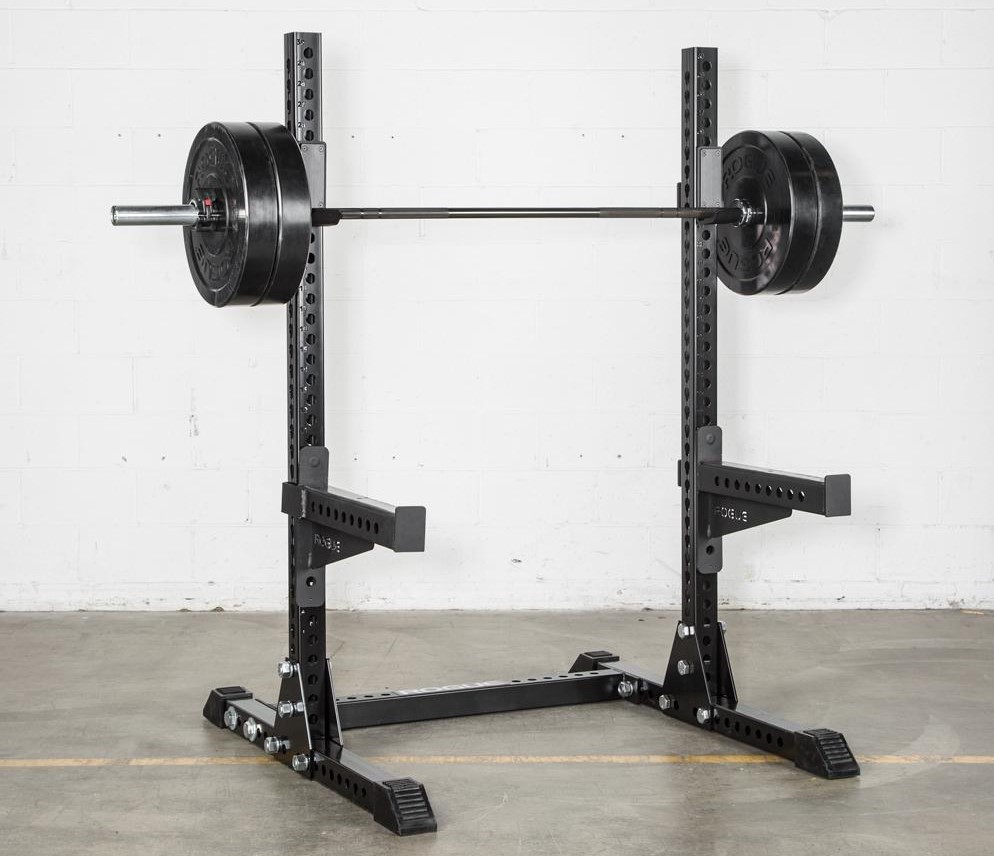
There is one possible disadvantage to J-hooks vs the simple bolts that the above pic illustrates. A bolt holds the bar at the same height you stick the bolt through. The J-hook holds the bar several inches lower. If you happen to be well over 6ft tall and you’re using a shorter squat rack like the Rogue SML-1, you could run into a problem with the max bar height.
UHMW Plastic Lined J-Hooks
Now we’re into current technology. This was a much-needed upgrade over all-steel J-hooks. The inside of the J-hooks have UHMW (ultra high molecular weight) plastic liners to protect your bar’s knurling and reduce noise.
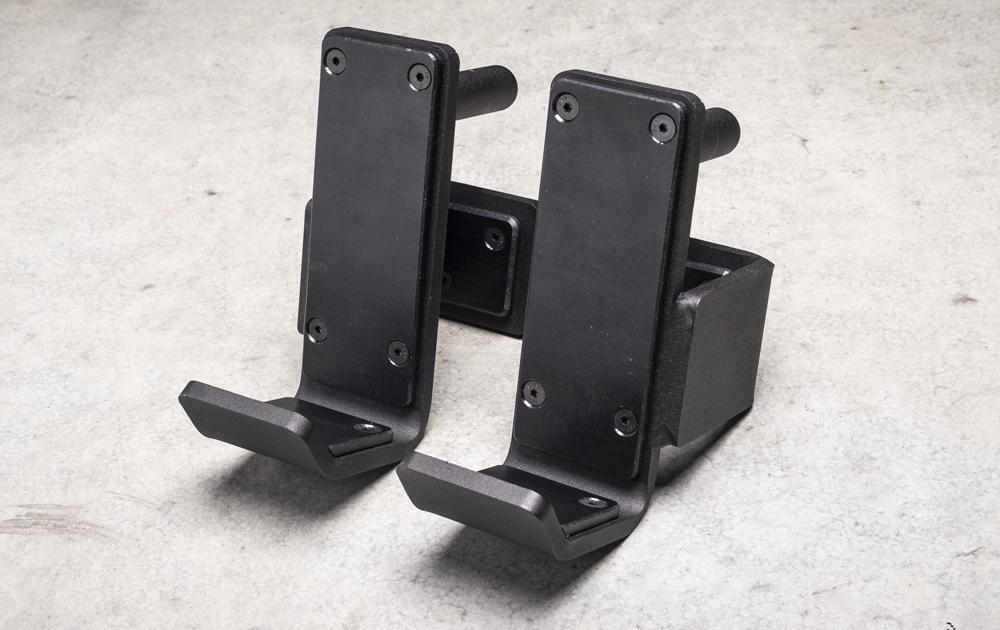
This type of plastic is hard and durable and has withstood the test of time in this application. It will not crack, even with a loaded bar slammed down onto it.
Normally the wear against the plastic, or against all-steel J-hooks for that matter, comes from you rotating the loaded bar as you try to slide it back centered after racking it, digging the knurling into the surface. Other normal use just doesn’t wear the plastic at all.
The proper term in industrial applications for this material is UHMWPE, ultra high molecular weight polyethylene. In the gym equipment industry it has gotten shortened to UHMW, or UHMW plastic. There are others such as HDPE, high density polyethylene. UHMWPE is the strongest.
As you can see in the pic of Rogue’s above, the back inside of the C-channel has a UHMW plastic liner as well, to protect the rack and reduce clanging noise.
However, check out this problem…
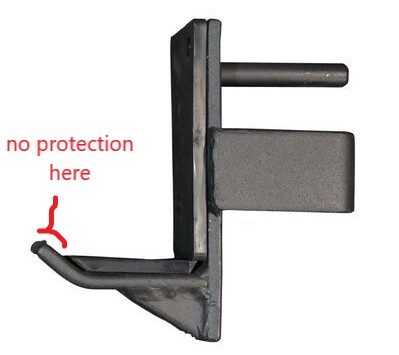
Most UHMW lined J-hooks, including Rogue, do not protect the front lip of the cup. So if your bar rolls forward to the lip, which is normally where you want it for unracking, then you’re scratching up your bar. There’s room to line the lip too. They choose not to do it to save on costs.
FringeSport, Bells of Steel, and Valor Fitness are three companies who pad the inner lip of their J-hooks, or at least on some models.
Update: Cary in the comments below brought Aperture Engineering’s J-hook liners to my attention to address this issue. I subsequently reviewed a pair.
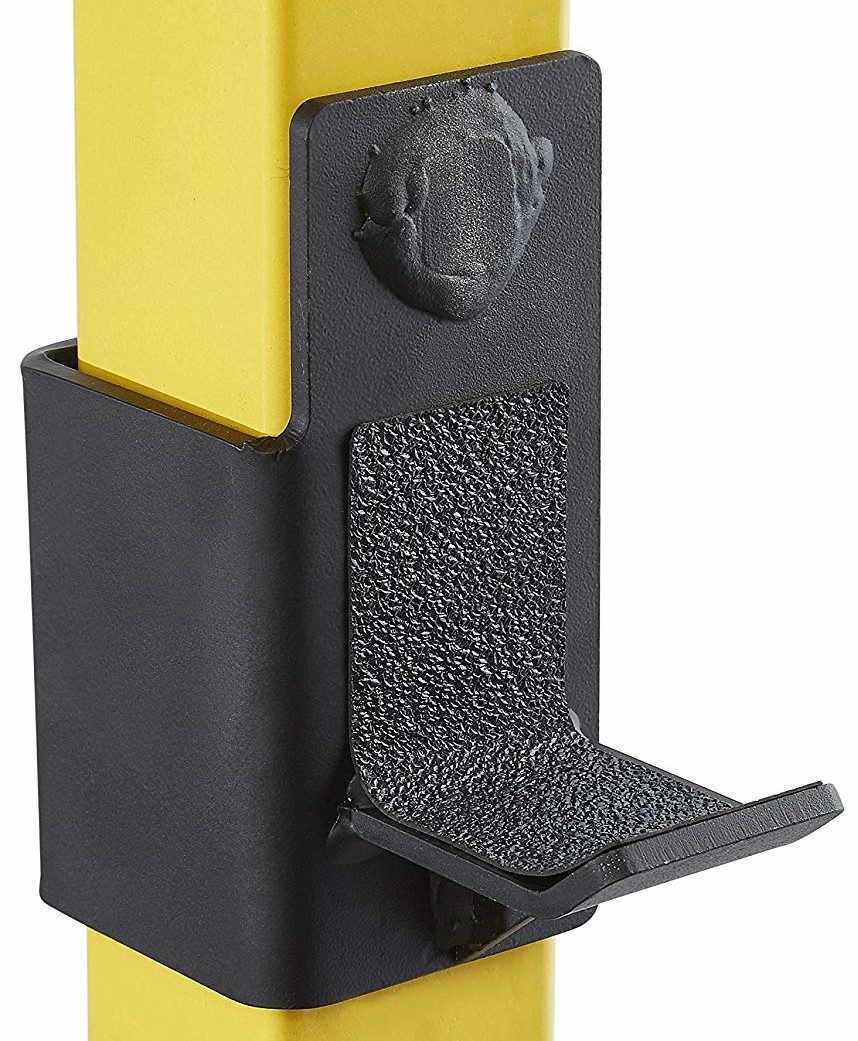
Warning: Some J-hooks are “upgraded” with a strip of some thin protective tape like the above, which is trash and will wear out quickly. In one diagram, they say this tape is only meant for protection during shipping, which is nonsense because of where it’s placed, and the way all their pictures include it.
Premium Option 1: Sandwich J-Hooks
What are these “sandwich” J-hooks, why are they more expensive, and why does anyone want them?
That’s what I thought when I first ran into them online. What’s wrong with other J-hooks? Well, I’ll tell you.
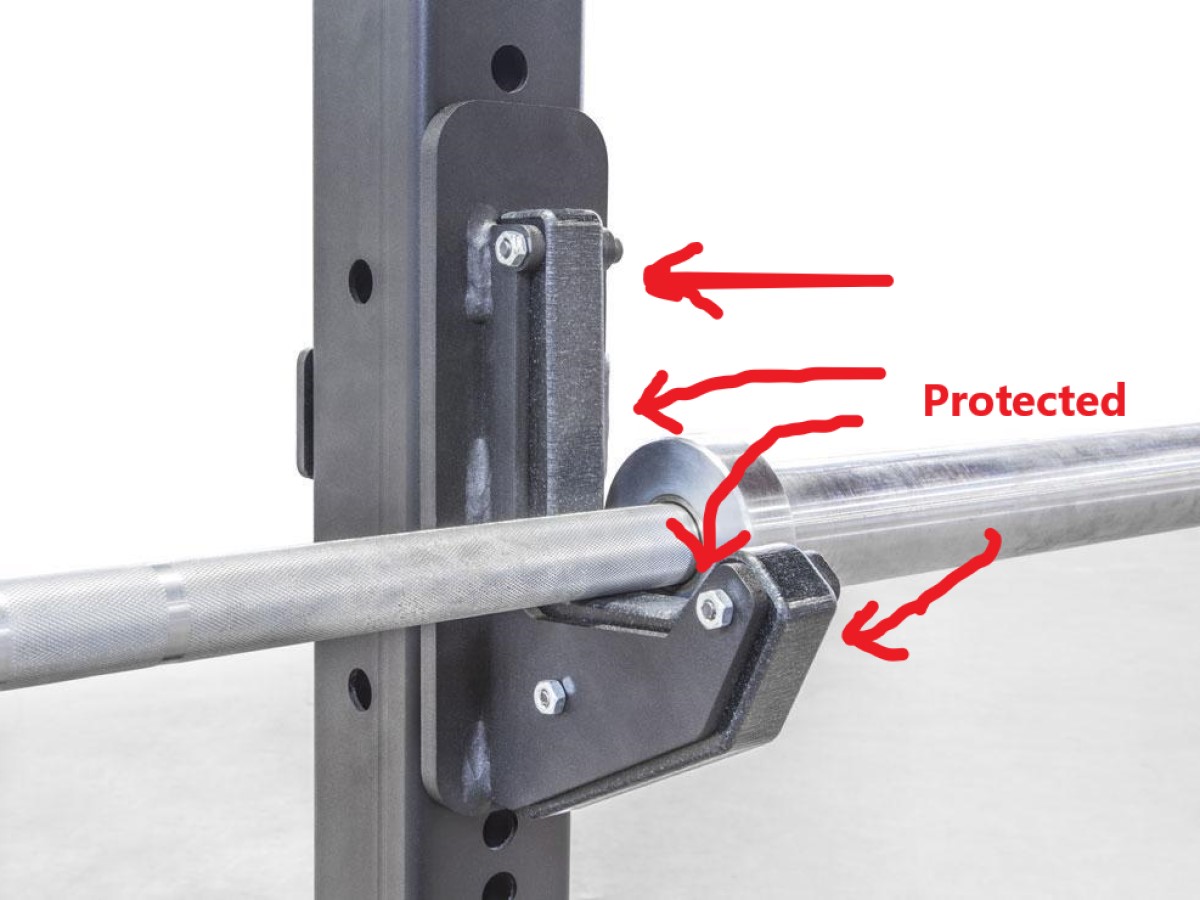
A thick chunk of UHMW plastic is sandwiched and bolted in between two thick steel plates in a way where the plastic sticks out all over. This design has a couple major advantages.
First, if you re-rack too low, into the bottom front of the J-hook, you’re still only hitting the plastic, not steel like you would with regular J-hook that only have plastic liners on the inside of the hook. It’s also so tall that if you rack the bar a few inches too high you’re still on the J-hook.
Second, the thin design of sandwich J-hook (it’s only 1.5″ thick side-to-side) gives you more room for side-to-side slop when racking the bar. That puts you at far less risk of hitting the shoulder of the bar on the J-hook as you rack the bar and trying to glance to your side to see what’s going on. You gain on an inch or two of room on both sides. The hook protrudes far enough from the rack that the bar shoulder will not hit the rack’s steel upright.
While your bar is the main thing to make sure you like in your gym, because it’s the thing you’re directly handling, the J-hooks of a rack are perhaps the next thing, because they control how easy it is for the bar to interact with the rack.
Several manufacturers make these. Rep Fitness makes good ones that are 100% compatible with Rogue racks at less than half the price of Rogue. Specifically, Rep’s PR-4000 sandwich J-cups fit Monster Lite racks, while their PR-5000 sandwich J-cups (select them on the same page) fit Monster racks. Normally Rep’s pricing is closer to Rogue, as their quality is about the same, but in this case it’s a steal.
Rep also makes rounded sandwich J-hooks. They give the advantage of the bar being always racked evenly front to back on both hooks, though not necessarily even laterally (see the roller J hooks section below for a solution to that). The disadvantage is you have to clear more of the J-hook, both vertically and horizontally, when lifting off, and I personally would find that too annoying.
Other brands have lousy cross-brand compatibility. They need to fit right. See the power rack accessories and compatibility guide.
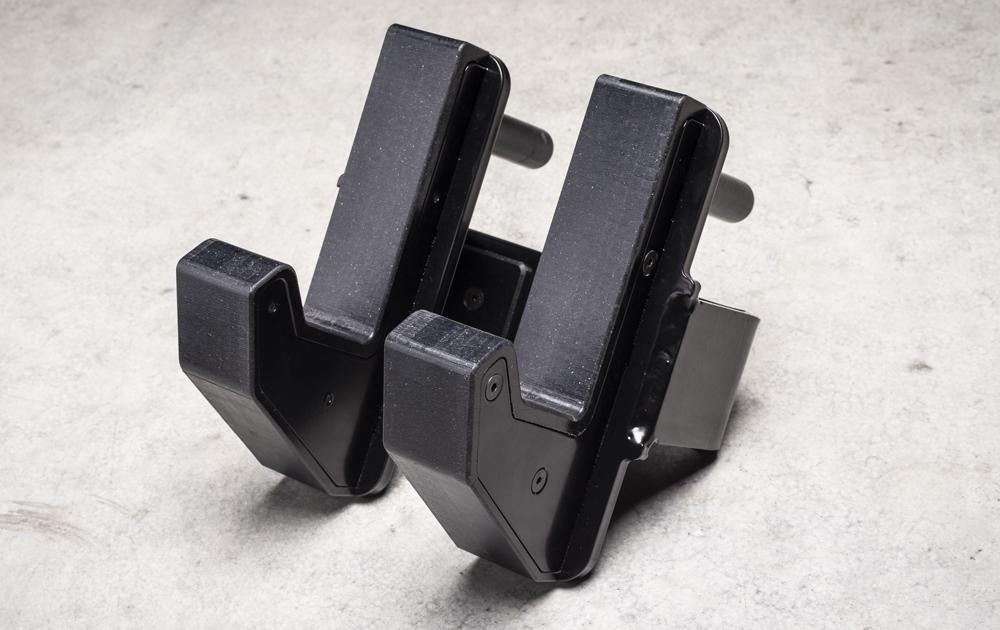
Rogue makes some extra-wide 2″ sandwich J cups for their Monster racks, which are made with the hardware recessed into the design so that no bolts are sticking out, for a cleaner look and no potential of the shoulder of your bar hitting a bolt.
Premium Option 2: Roller J-Hooks
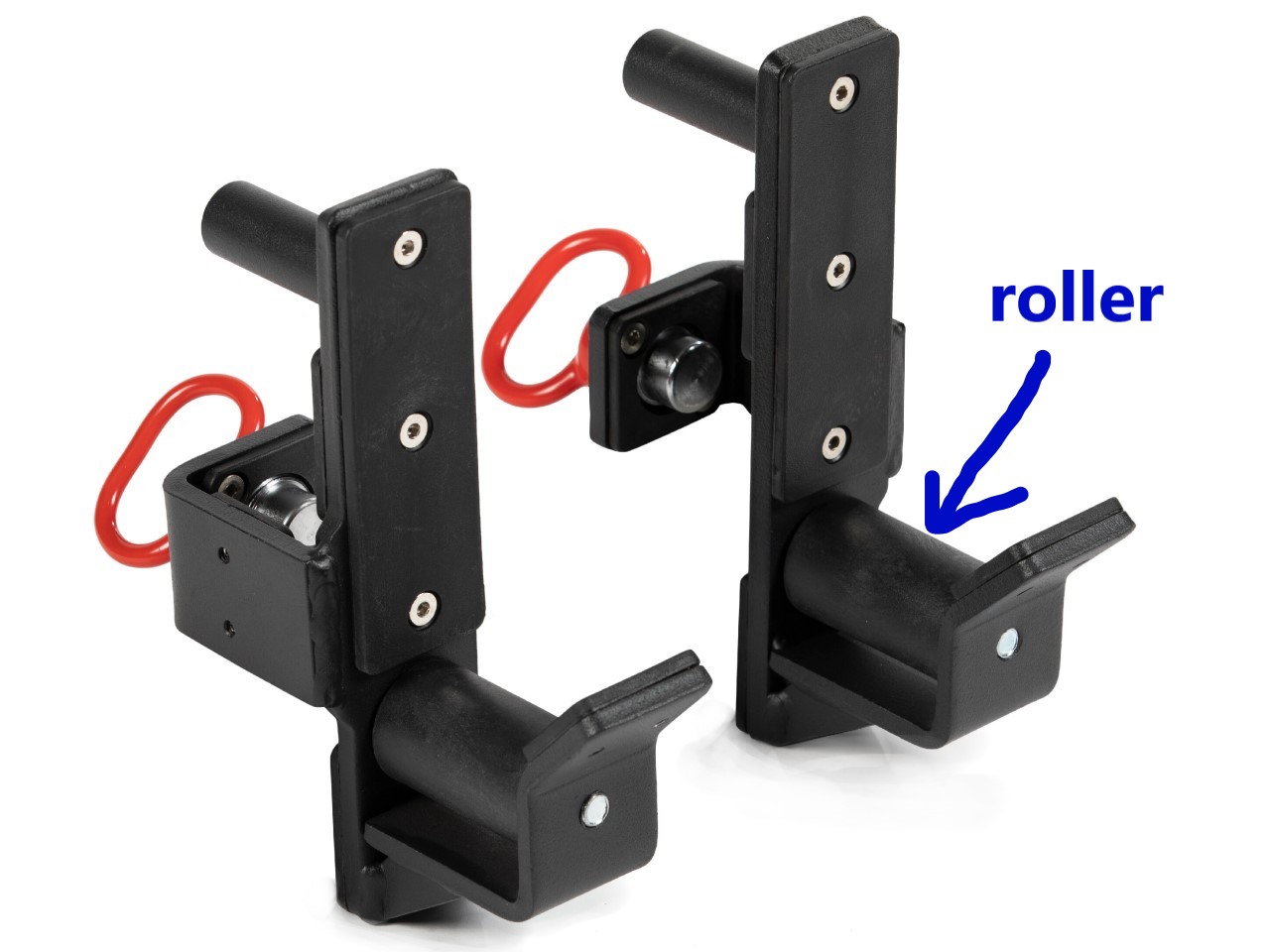
With roller J-hooks, re-centering the bar before each set becomes trivial with the nylon roller that is set over a steel pin. Normally it’s an onerous task if you have a lot of weight on the bar. I imagine the idea has been around for a while. I saw a clip of Alan Thrall some time back building some steel ones into his olympic bench before I found any of these for sale.
The above are from Titan Fitness, who currently has them in 4 sizes to fit each of their rack series, which makes them compatible with the majority of other brands of racks. Titan’s racks are metric sized at 75mm square tubing, but these should fit over imperial 3″x3″ tubing too. The issue you’ll run into is their hole spacing is also metric and the locking pin might not line up on your rack.
Basement Brandon pointed out in the below video that roller J-hooks must be prevented from swinging sideways, due to the lateral force you apply to roll the bar. So they either need to fit snugly enough that the roller functions before the whole attachment swings or the attachments need a locking pin like Titan’s above.
Some rollers are tapered, not straight like Titan, forcing the bar into one spot – a lot like rounded sandwich J-cups do as mentioned in a section further above – and making re-racking possibly unnerving.
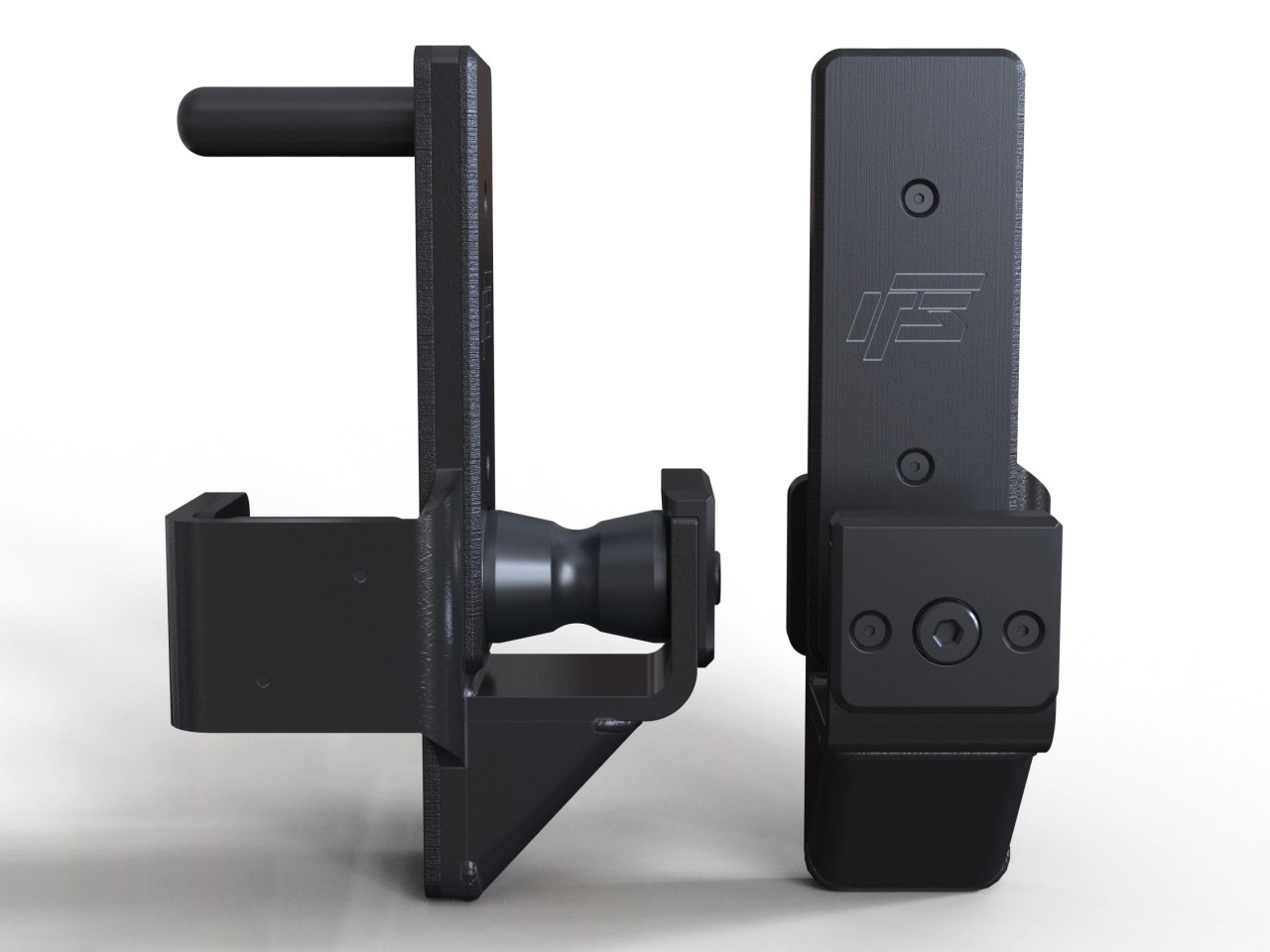
Although I normally focus on US-based companies, Irwin Fitness, shipping out of Canada, is one other company that will make them with flat rollers as an option above, and they reportedly fit perfectly snug on true 3″x3″ tubing.
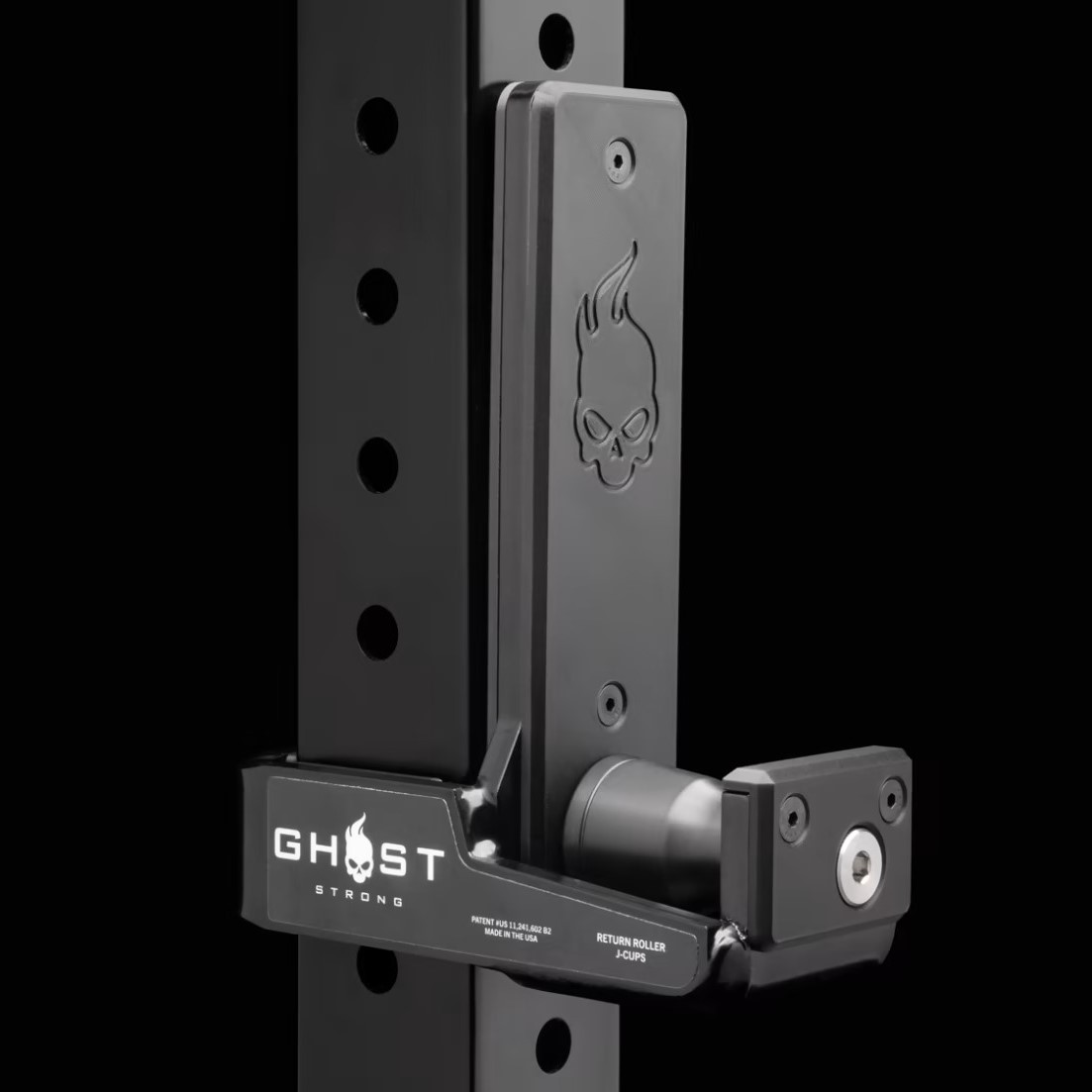
One more popular option I should mention is the Ghost Roller J Cups, which Rogue redesigned slightly (but keeping what made it popular) as version 2 when they acquired Ghost Strong’s IP in 2022, made in both a Monster Lite and Monster version.
Adapting for the Right Fit
I mentioned this in the section above on roller J-hooks, but this goes for all styles. Unlike some other power rack attachments, any J-hooks need to fit reasonably well on your rack. You don’t want significant slop when it comes to a safety-critical part like J-hooks that need to feel solid. This includes both the tubing size and the hole size being a good fit.
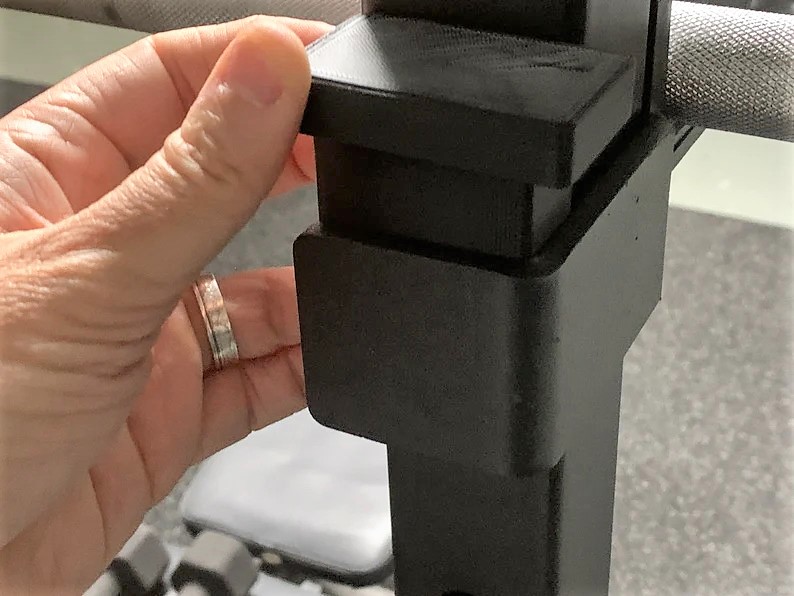
To make them fit good, an Etsy seller makes 3D printed J cup adapters made from PLA. His standard size of 2″ will let you fit a 2×3 J-cup on a 2×2 rack, while his standard size of 3″ will let you fit a 3×3 J cup on a 2×3 rack. It looks like he’s now making them in any custom size you need. Are they safe? I don’t know. You could probably epoxy it onto the bracket for some extra safety. He’s been selling them for some time now with good reviews.
Before those came out, I also suggested cutting some shims from UHMW plastic sheets with a power tool as a possible way to fit oversized J-hooks on smaller tubing, and maybe epoxy them on.

